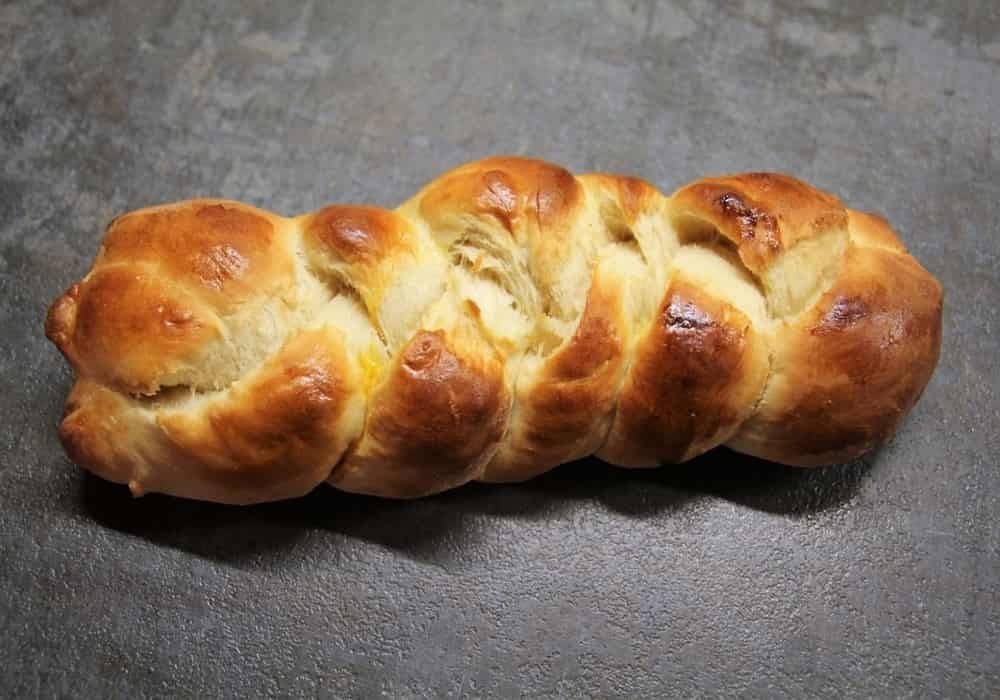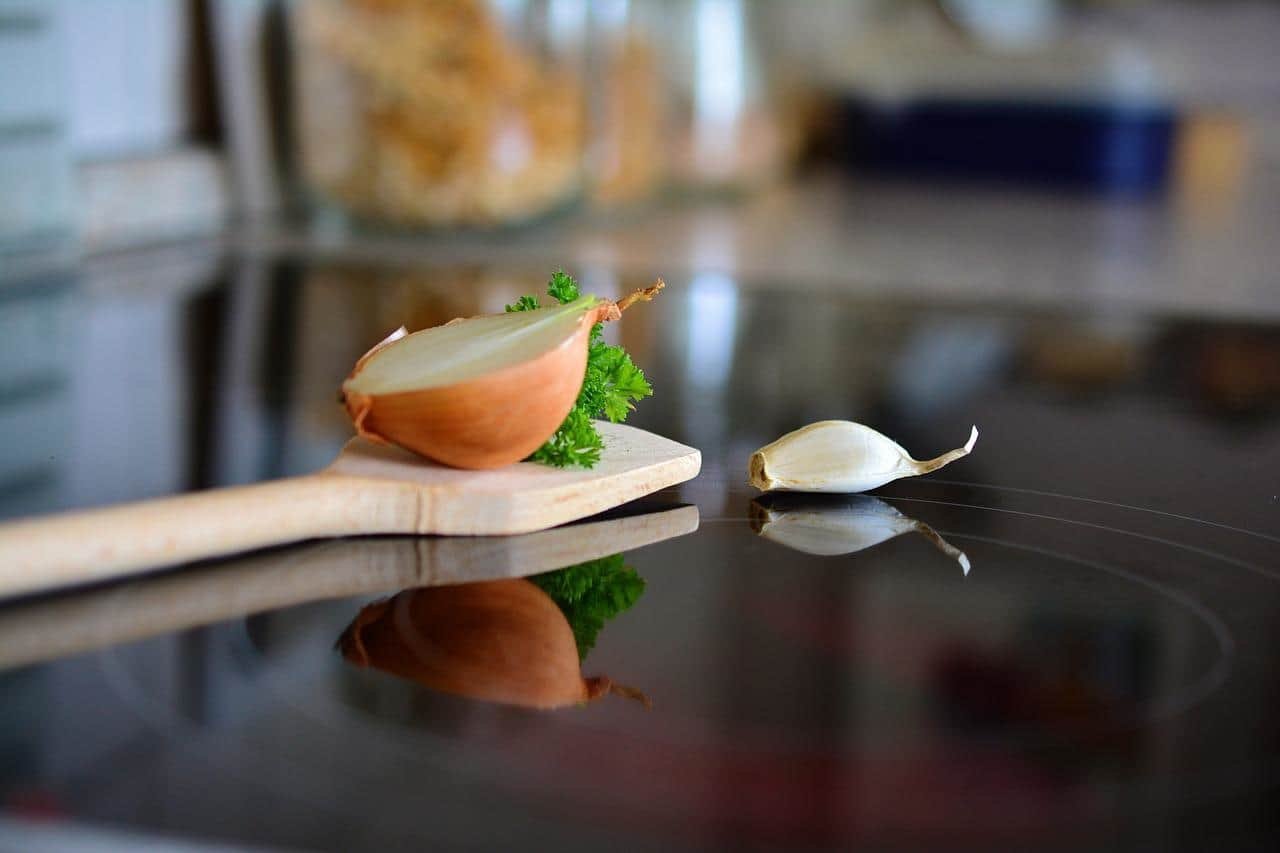Maillard Reaction
In an ultra-simplified way, the Maillard reaction is a series of chemical reactions which lead to a browning of the material and of the aromas which we call “cooking”.
Why do foods turn brown during cooking?
Oxidation or browning of food is a natural phenomenon. It is simply a chemical reaction caused by oxygen in the air. This process speeds up or slows down depending on the light, but also on the temperature: heat having a booster effect and cold, a retarding effect.
Caramelization or Maillard reaction?
The Maillard reaction, like caramelization, allows food to be colored, but it is dangerous for our health.
In the food industry, certain so-called browning reactions are used in manufacturing processes to improve the taste and appearance of food. The two main ones, caramelization and glycation more commonly known as the Maillard reaction, require the presence of sugar. Unfortunately, the latter induces the formation of harmful products, and it turns out that it can even take place within our bodies!
What are the essential elements for the Maillard reaction to occur?
The Maillard reaction occurs when a mixture of proteins and sugars is heated to a temperature between 0 and 150° C, at a pH ideally between 6 and 10, in the presence of a humidity rate ideally close to 15% . An insoluble, blackish, carbonaceous body is then formed and water is removed.
Caramelization
Who has never made caramel in their kitchen? Indeed, caramelization is a fairly simple culinary technique which consists in reacting sugar, most often sucrose, with water by heating it beyond its melting point, therefore above 180 ° C. Chemically, the reaction is a polymerization (assembly of several sugar molecules to form one of larger size) during which aromatic compounds and colored pigments are formed.
Caramelization, or the addition of caramel to certain preparations, therefore aims to add flavor and brown tint to foods.
A caramelization-type reaction becomes dangerous to health when it involves the presence of proteins: this is called glycation, or Maillard reaction.
Maillard reaction in food
The Maillard reaction takes its name from Louis Camille Maillard, a French chemist who first described this strange non-enzymatic reaction between sugars and proteins over a century ago.
Every day we see Maillard’s reaction when we cook. During cooking, the amino acids constituting the proteins react spontaneously with the sugars in a kind of “protein caramelization”. This is how foods cooked at a high temperature turn brown and obtain their flavor and smell.
Among the best examples to illustrate this reaction: the pretty color and the toasted flavor of the toast, the deep aroma of roasted coffee, the roasted chicken in the oven and its caramelized color, the golden crust of the bread at your baker’s, the good smell of grilled meats … So many appetizing things! And that is precisely why the food industries are banking on Maillard’s reaction to make their products ever more attractive and enticing.
Involved in protein degradation
Unfortunately, like many foods, what pleases the taste buds isn’t always good for you.
Indeed, nutritionally, many nutrients, of which the proteins are obviously degraded during the Maillard reaction. More importantly, the reaction results in the formation of advanced glycation products or AGEs, with toxic and harmful effects on our health.
Among these, acrylamide (the acrylamide belongs to the chemical group of amides . In its pure form, it is a white, odorless, crystalline powder that is soluble in water, ethanol, and ether) is formed during high temperature cooking of foods rich in starch and protein. This molecule has been classified by WHO as posing a risk to human health because it potentially increases the risk of developing cancer. Acrylamide is also thought to have an effect at the neurological level: it would disrupt the transport of essential compounds in neurons, promoting their degeneration. It is found in breads, cookies, fried potatoes, coffee, cereal flakes…
A century after its discovery, the Maillard reaction is back in the spotlight and is the subject of numerous studies in order to better understand its mechanisms and repercussions on our health. It is indeed suspected of being involved in the aging of the body and in the development of various disorders.
Harmful effects
The ingestion of a previously glycosylated product, which happens when food is subjected to high temperatures or ionizing radiation in the sterilization processes (which accelerates the non-enzymatic glycosylation of proteins through the Maillard reaction), causes it to behave as a glucotoxin; favoring the development of type II diabetes mellitus.
Advantages
Cooking foods affords numerous food safety benefits. During heating, Maillard reaction products are formed. MRPs contribute sensory aspects to food, including color, taste and texture
In food chemistry
the Maillard reaction, also called Maillard reactions (because the term actually encompasses very many different chemical reactions) or glycation, is a very complex chemical reaction that occurs in almost all foods, resulting from condensation initial between the amine group of organic compounds (amino acid, protein) and the carbonyl group of reducing sugars (glucose, fructose, lactose, ribose).
It is observed in particular in foods subjected to heating or cooking, leading to their non-enzymatic browning, but also, at room temperature, in those of long conservation (powdered infant formula). This organic reaction ultimately creating “products of the Maillard reaction” (aromatic molecules and melanoidins, brown pigments of very little known structure) is the main responsible for the production of odors, aromas and pigments characteristic of heated foods (syrup d. ‘maple, brown butter), cooked (roasted meats, toast, freshly roasted coffee) or raw ham. It can also give rise to carcinogenic compounds (acrylamides, polycyclic hydrocarbons, heterocyclic amines, hydroxymethylfurfural) and also reduce the nutritional value of foods by degrading essential amino acids.
The stages of the Maillard reaction
Maillard reactions consist of three main stages.
A first step leads to the formation of a carbonylamine, corresponding to a covalent bond between a carbonyl group and an α or ε-NH 2 function of a free amino acid or protein.
Then a second step results in brown or fluorescent products called AGE (Advanced Glycated End products) or PTG (Glycation Terminal Products) to describe the products obtained in the context of the use of a saccharide derivative with a free amine function. In food, this step leads to many compounds. Some become aromatic molecules but others are potentially toxic.
Finally, the final step leads to the polymerization into melanoidins.
What are the essential elements for the Maillard reaction to occur?
The Maillard reaction occurs when a mixture of protein and sugar is heated to a temperature between 0 and 150 °C, at an ideal pH between 6 and 10, in the presence of an ideal humidity level close to 15% . An insoluble, blackish, carbon-containing body is then formed and water is removed.
Example foods obtained with the Maillard reaction
- During baking, the surface of the bread turns brown and forms a delicious crispy crust. This browning is due to a reaction called the Maillard reaction. It is a chemical reaction resulting from the action of sugars on proteins.
- Cookies : The toasted color of the outside of the cookies generates a characteristic taste.
- The candy made of mixtures of milk and sugar , also called toffee. It is responsible for the brown color in the bread when toasted.
- The color of foods such as beer (from roasted barley malt ) and coffee .
- Products for spray creams.
- The taste of roasted meat and onions cooked in the pan when they start to darken.
- The color of milk syrup obtained by heating milk with sugar.
The compound 6-acetyl-1,2,3,4-tetrahydropyridine is responsible for the smell of cookies or bread and popcorn. The chemical compound 2-acetyl-1-pyrroline is responsible for the aromatic taste of cooked rice varieties. Both compounds have an olfactory level below 0.06 ng / L. Some of the other compounds produced in the Maillard reaction are 2-acetylpyridine . The polymeric compounds generated by this reaction that add brown or toasted color to many foods are generically known as melanoidins.
How to limit Maillard’s reaction?
Favor gentle cooking methods, preferably at a temperature below 100 ° C, such as steaming, stewing, in a bain-marie … and avoid high temperatures (roast, oven, grill, frying, barbecue) which trigger Maillard’s reaction.
Avoid reheating already cooked food or multiple cooking.
Do not eat blackened and burnt food: if you have left your sausage on the barbecue or if your toast comes out blackened from the toaster, throw it out!
Rediscover the taste of undercooked or even raw foods! Limit the dangers of the Maillard reaction by consuming meats in the form of tartare and carpaccio, raw vegetables in the form of raw vegetables or crunchy vegetables.
Limit foods very rich in proteins and sugars such as fatty meats, sugary foods and drinks, dairy products….
Avoid prepared meals and ultra-processed products rich in advanced glycation products: grilled products, heated cereal products, crackers, popcorn, puffed rice, breakfast cereals…
Medical and cosmetic applications
The Maillard reaction, known in the medical world as glycation or non-enzymatic glycosylation of proteins, was first studied in diabetes using glycated hemoglobin, a variant of hemoglobin caused by changes generated by Maillard, which now serves as a long-term marker of diabetic status in patients. Glycation has effects throughout the body, which are more pronounced only in the case of people with diabetes.
Glycation produces residues called Advanced glycation end-products (AGEs) which accumulate in the body. They lead to cell and tissue damage, vascular aging and kidney failure. They would also promote Alzheimer’s disease.
It should also be noted that glycation is independent of diabetes, but the high proportion of sugars in the case of this disease greatly promotes the Maillard reaction and therefore glycation because in the body, it is punctual and not enzymatic.
Self-tanning cosmetic creams also use the Maillard reaction: the dihydroxyacetone they contain is a sugar that reacts with the proteins in dead cells in the stratum corneum of the skin, creating a brown pigment.
Conclusion
The Maillard reaction is a series of parallel and consecutive reactions, the complexity of which has been illustrated. It is therefore very important to be able to control the entire reaction, from the precursors through the transformation processes, storage conditions and finished products. Maillard’s reaction has intervened enormously in our daily life since humans learned to cook. In addition, in recent years, emphasis has been placed on the implication that the Maillard reaction could have on health or on certain biochemical and geochemical mechanisms. As such, it is one of the most interesting and useful reactions to study and understand in food chemistry and in
medicine.
Sourcs: PinterPandai, National Center for Biotechnology Information (NCBI), Science Direct, Chemical & Engineering News (C&EN), Bruker
Photo credit: ReinhardThrainer / Pixabay


